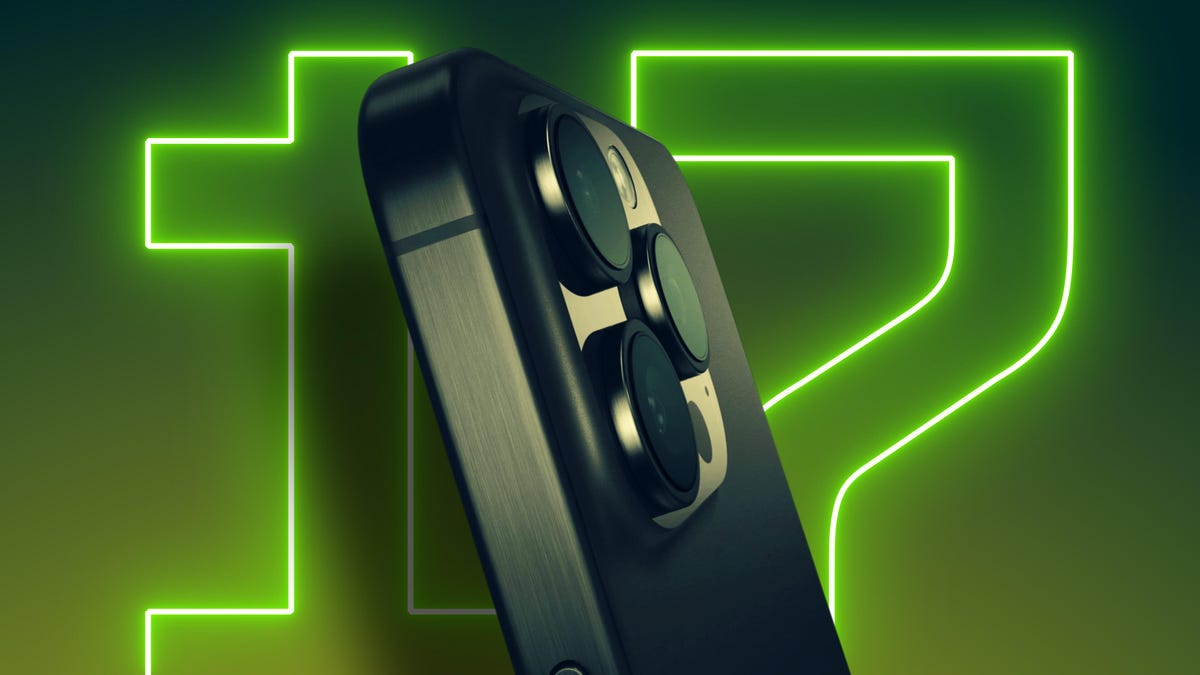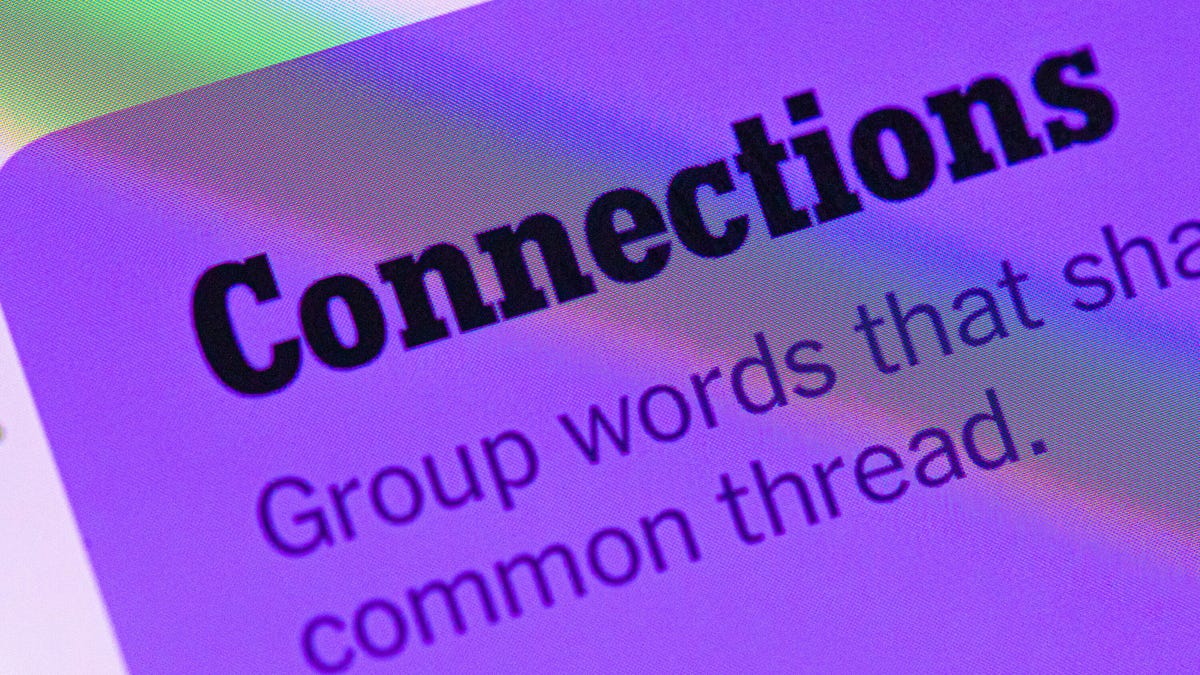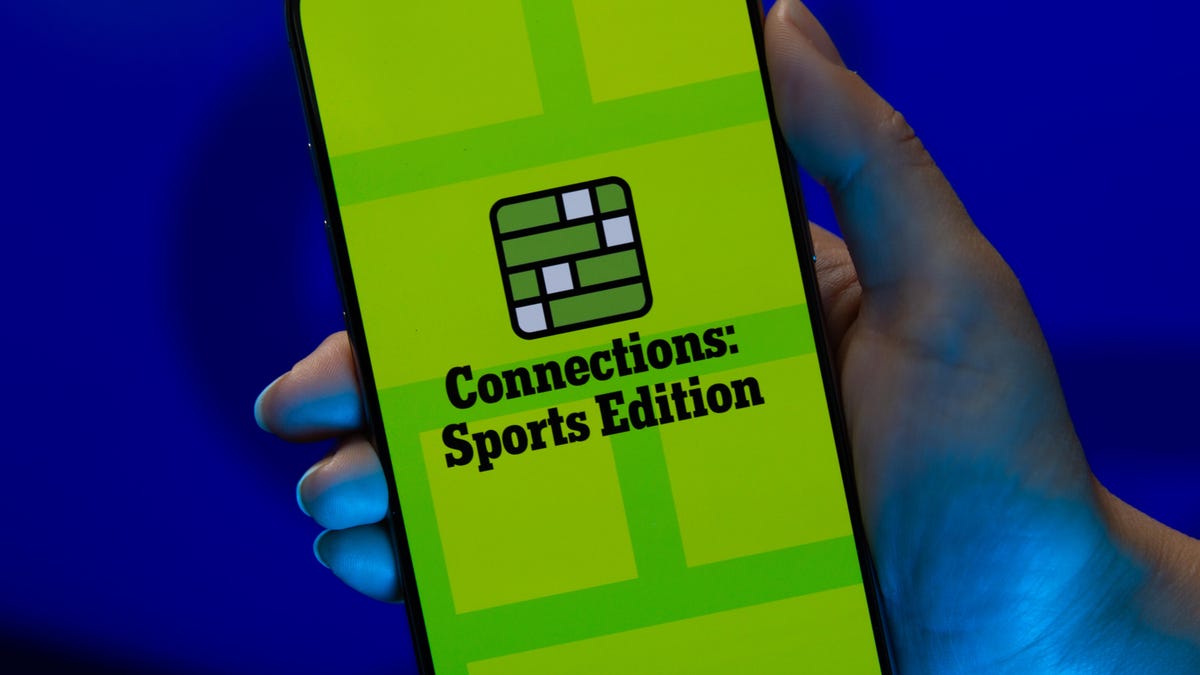Technologies
iPhone 17 Rumors, From a Slim ‘Air’ Model to a New Camera Design
Rumors also suggest the full iPhone 17 lineup could get more RAM.

We’re still months away from Apple’s anticipated reveal of the next iPhone, but plenty of rumors are swirling about what the upcoming device, likely called the iPhone 17, could look like.
From a redesigned camera module to a slimmer «Air» version of the iPhone 17, there’s been lots of buzz about what Apple’s next lineup will bring. We might even see a fresh blue color option for the Pro models.
It’s not just about external appearances; reports suggest Apple will overhaul the look and feel of its software with the launch of iOS 19 as well. There are also rumors about increased RAM across all four expected devices.
Here’s what analysts and leakers predict about the iPhone 17 lineup, which is expected to be announced in September.
A slimmer iPhone 17 ‘Air’
One of the biggest rumors surrounds a possible iPhone «Air,» a thinner version of Apple’s flagship device that would replace the iPhone Plus option.
The Air could feature a 6.6-inch screen, making it slightly smaller than the iPhone 16 Plus and iPhone 16 Pro Max but still bigger than the baseline model, according to analysts Jeff Pu and Ming-Chi Kuo. A Bloomberg report from March supports those rumors, and notes that the iPhone Air could measure 5.5mm thick. The report also suggests the phone will cost around $900, putting it on par with the iPhone 16 Plus and maintaining its place in the iPhone hierarchy.
For Apple to slim down a device, it would need to make hardware trade-offs, and that might include the phone’s camera. According to both Kuo and Bloomberg, it’s possible this version of the iPhone 17 would have only one main camera, doing without the ultrawide and 5x telephoto lenses that have been staples of Apple’s premium iPhones for years. This would place the slim iPhone in the same camp as the $600 iPhone 16E when it comes to cameras, as that phone has only one rear lens. The good news, though, is that the selfie camera on the iPhone Air could get a boost; more on that later.
One key challenge will be maintaining a high battery capacity, since a slimmer build typically means less space for the battery and thus a potential compromise on battery life. Bloomberg suggests Apple is focused on tackling that shortcoming. The report also notes that the iPhone 17 Air is expected to have superslim bezels, a Camera Control button and the Dynamic Island.
The phone will likely feature an A18 or A19-branded chip, Pu suggests. This would reportedly match the chip in the baseline iPhone 17. It could also include the Apple-developed 5G modem, called the C1 chip, which debuted on the iPhone 16E.
A higher refresh rate across the board
Rumor has it all models of the iPhone 17 will feature a 120Hz display, bumping the non-Pro models up from their current 60Hz refresh rate. That could be a welcome change, as the discrepancy between the Pro and non-Pro refresh rate is surprising; when Apple debuted the iPhone 16 and 16 Plus with a 60Hz display, there was a bit of an outcry from folks who expected more in 2024. This rumored update could remedy that — and possibly bring the always-on display to the baseline model.
What we likely won’t see is a new anti-reflective display that Apple was reportedly working on, according to MacRumors. A source reportedly told the publication that Apple scrapped plans for a more scratch-resistant display coating which could have appeared on the iPhone 17 Pro and Pro Max. This would have made them the first iPhones with an anti-reflective screen, giving them a feature that CNET’s Patrick Holland deemed one of the best attributes of the Samsung Galaxy S25 Ultra. According to MacRumors, «Apple ran into problems scaling up the display coating process, and it is currently no longer a planned feature for the iPhone 17 Pro models.»
Camera upgrades
It’s not an iPhone release without a camera upgrade, and there have been plenty of rumors about what the camera module could look like on Apple’s upcoming phones. In January, a leaked image from Majin Bu on X suggested the phone could feature a pill-shaped camera bar, essentially resembling what you’d find on Google’s Pixel 9 phone. In February, Bu followed up with CAD renders of what’s said to be the iPhone 17 lineup, featuring horizontal camera bars, as well as larger rectangular bars on the iPhone 17 Pro models.
iPhone 17 Lineup CAD pic.twitter.com/xednTkpJnq
— Majin Bu (@MajinBuOfficial) February 23, 2025
Front Page Tech also shared iPhone 17 Pro renders in a video in February, depicting a larger camera bar that maintains the lens’ stacked layout. A separate video on the iPhone 17 Air shows a smaller camera bar, with one lens on the left.
In April, Bloomberg reported the «iPhone 17 Pro will look a lot more like the 16 Pro than anticipated,» adding, «From the front, the 17 Pro will appear quite similar to the 16 Pro. It’s the back camera that will look meaningfully different.» The latest rumors suggest the iPhone 17 Pro’s three-lens camera arrangement will be maintained, but will sit on a new panel that stretches across the phone’s width.
Later in April, Bu again posted an image of the purported iPhone 17 lineup, showing those wider camera bars with the stacked lenses still configured to the left.
iPhone 17 Lineup pic.twitter.com/oUEEH9bJn5
— Majin Bu (@MajinBuOfficial) April 22, 2025
Not until next year, for the 20th anniversary of the iPhone, will Apple be «preparing a major shake-up» for the phone’s design, Bloomberg says. That includes a (long-rumored) foldable version and a «bold new Pro model that makes more extensive use of glass.»
Another camera-related rumor is that the selfie camera on all iPhone 17 models, including the Air, will be upgraded to 24 megapixels, according to Pu. That’s a decent bump from the current 12-megapixel front-facing camera on the iPhone 16 lineup, though it’s important to remember that more megapixels don’t automatically mean better photos. Still, given how much people increasingly rely on their front cameras to snap selfies and record videos for TikTok and Instagram, this will surely be a welcome advancement.
A sky blue iPhone 17 Pro
It’s not clear what colors will be included in the iPhone 17’s lineup. But in April, Bu said the iPhone 17 Pro and Pro Max could include a sky blue option. In an article, Bu wrote that «sources close to the supply chain confirm that several iPhone 17 Pro prototypes have been made in various colors, with Sky Blue currently the frontrunner.»
The New iPhone 17 Pro Possible Color
Full Article:https://t.co/IKBZ8tmRou— Majin Bu (@MajinBuOfficial) April 21, 2025
Bu describes the sky blue color as being «even more stunning than the much-loved Sierra Blue of the iPhone 13 Pro, with a brightness and refinement that make it irresistible.» (My colleague Jeff Carlson isn’t so thrilled about this rumor.)
iOS 19 could bring a fresh look
Regarding what’s on the inside, Apple is reportedly looking to revamp its mobile operating system with the release of iOS 19. According to Bloomberg, this «includes updating the style of icons, menus, apps, windows and system buttons.» Sources reportedly told the publication that Apple is «working to simplify the way users navigate and control their devices,» and that the design borrows from the Vision Pro’s operating system. For instance, VisionOS features more circular app icons and translucent navigation panels. It’s possible what you’ll see on your future iPhone could more closely mirror this aesthetic.
The software revamp would reportedly extend to iPad and Mac, therefore bringing consistency across Apple’s devices. Bloomberg notes this would be the biggest software shakeup since macOS Big Sur’s release in 2020 and iOS 7’s release in 2013.
Other possible features
The rumors on what frames the iPhone 17 lineup will feature have gone back and forth, but Pu recently suggested the iPhone 17, iPhone 17 Pro and iPhone 17 Pro Max will all have aluminum frames. He noted that the iPhone 17 Air could be the outlier with a titanium frame.
Additionally, the iPhone 17 Pro Max could have a narrower Dynamic Island, thanks to a smaller Face ID sensor. Pu has said the Dynamic Island on other iPhone 17 models would reportedly stay the same size.
In February, Kuo noted Apple will swap out Broadcom’s Wi-Fi chips for in-house chips across the iPhone 17 lineup, stating this would «enhance connectivity across Apple devices.» It’s not yet clear what exactly this would mean, but it would be interesting if Apple’s C1 chip were accompanied by its own Wi-Fi chip, too.
In April, tipster Digital Chat Station noted that given the use of Apple Intelligence and AI on a «large scale,» all the phones will come with 12GB of RAM. Digital Trends notes this aligns with previous suggestions from Kuo, which gives the rumor some added weight. The iPhone 16 lineup tops out at 8GB of RAM, so this would be a notable leap.
We’ll continue to update this piece as more rumors surface, so be sure to follow along.
Technologies
Today’s NYT Connections Hints, Answers and Help for Nov. 15, #888
Here are some hints — and the answers — for the NYT Connections puzzle for Nov. 15, #888.

Looking for the most recent Connections answers? Click here for today’s Connections hints, as well as our daily answers and hints for The New York Times Mini Crossword, Wordle, Connections: Sports Edition and Strands puzzles.
Today’s NYT Connections puzzle includes some tricky words. If you need help sorting them into groups, you’re in the right place. Read on for clues and today’s Connections answers.
The Times now has a Connections Bot, like the one for Wordle. Go there after you play to receive a numeric score and to have the program analyze your answers. Players who are registered with the Times Games section can now nerd out by following their progress, including the number of puzzles completed, win rate, number of times they nabbed a perfect score and their win streak.
Read more: Hints, Tips and Strategies to Help You Win at NYT Connections Every Time
Hints for today’s Connections groups
Here are four hints for the groupings in today’s Connections puzzle, ranked from the easiest yellow group to the tough (and sometimes bizarre) purple group.
Yellow group hint: Yum!
Green group hint: Grammar time.
Blue group hint: They win Oscars and Tonys.
Purple group hint: Think DMZ.
Answers for today’s Connections groups
Yellow group: Enhance the taste of.
Green group: Punctuation marks.
Blue group: Kinds of actors.
Purple group: ____ zone.
Read more: Wordle Cheat Sheet: Here Are the Most Popular Letters Used in English Words
What are today’s Connections answers?
The yellow words in today’s Connections
The theme is enhance the taste of. The four answers are flavor, salt, season and spice.
The green words in today’s Connections
The theme is punctuation marks. The four answers are colon, dash, period and slash.
The blue words in today’s Connections
The theme is kinds of actors. The four answers are character, film, method and stage.
The purple words in today’s Connections
The theme is ____ zone. The four answers are buffer, comfort, time and twilight.
Technologies
Today’s NYT Connections: Sports Edition Hints and Answers for Nov. 15, #418
Here are hints and the answers for the NYT Connections: Sports Edition puzzle No. 418 for Saturday, Nov. 15.

Looking for the most recent regular Connections answers? Click here for today’s Connections hints, as well as our daily answers and hints for The New York Times Mini Crossword, Wordle and Strands puzzles.
Today’s Connections: Sports Edition is a fun one. Not really sure what the yellow category has to do with sports, but OK, whatever. If you’re struggling but still want to solve it, read on for hints and the answers.
Connections: Sports Edition is published by The Athletic, the subscription-based sports journalism site owned by the Times. It doesn’t show up in the NYT Games app but appears in The Athletic’s own app. Or you can play it for free online.
Read more: NYT Connections: Sports Edition Puzzle Comes Out of Beta
Hints for today’s Connections: Sports Edition groups
Here are four hints for the groupings in today’s Connections: Sports Edition puzzle, ranked from the easiest yellow group to the tough (and sometimes bizarre) purple group.
Yellow group hint: Keeps your head warm.
Green group hint: Nothing but net!
Blue group hint: College signal-callers.
Purple group hint: It’s a bird! It’s a plane!
Answers for today’s Connections: Sports Edition groups
Yellow group: Headgear.
Green group: A score in basketball.
Blue group: First names of SEC QBs.
Purple group: Super ____.
Read more: Wordle Cheat Sheet: Here Are the Most Popular Letters Used in English Words
What are today’s Connections: Sports Edition answers?
The yellow words in today’s Connections
The theme is headgear. The four answers are balaclava, cap, hat and visor.
The green words in today’s Connections
The theme is a score in basketball. The four answers are basket, bucket, field goal and make.
The blue words in today’s Connections
The theme is first names of SEC QBs. The four answers are Arch, Diego, Trinidad and Ty.
The purple words in today’s Connections
The theme is super ____. The four answers are flex, Sonics, speedway and star.
Technologies
Older Pixel Phones Score a Handy New Feature: Call Recording
Google says the feature is also coming to non-Pixel phones, though the specific models are unclear.
There are some times when you need to record a phone call — whether it’s for school or for legal purposes — and Google now offers this to more Pixel users. Google is rolling out call recording to older Pixel phones, and even some non-Pixel phones which use the Google Phone app.
Both Pixel 9 and Pixel 10 phones already include the AI-powered Call Notes function to generate summaries of your conversations. According to Google, the ability to record calls is now coming to Pixel 6 devices and up.
Read more: Best Pixel Phones of 2025
Pixel users with Android 14 software or later, and the latest version of the Google Phone app, can access Call Recording settings by going to Phone > Settings > Call Recording. Users can set up the ability to always record calls, as well as record from certain numbers.
Don’t miss any of our unbiased tech content and lab-based reviews. Add CNET as a preferred Google source.
When in a call, users can press the record button at the bottom of the screen. The other party will then hear a message saying that the call will be recorded. Recordings will be kept indefinitely or you can choose to delete them after seven, 14, or 30 days.
While Google’s support page says the feature is available to non-Pixel phones with Android 9 and up, the feature does appear to be device-dependent. I attempted to use the feature on two recent Samsung Galaxy phones — one with AT&T and one on T-Mobile — and confirmed that the «Call Recording» option doesn’t appear.
A representative for Google did not immediately respond to a request for comment.
Apple iPhone users can also record calls.
-

 Technologies3 года ago
Technologies3 года agoTech Companies Need to Be Held Accountable for Security, Experts Say
-

 Technologies3 года ago
Technologies3 года agoBest Handheld Game Console in 2023
-

 Technologies3 года ago
Technologies3 года agoTighten Up Your VR Game With the Best Head Straps for Quest 2
-

 Technologies4 года ago
Technologies4 года agoBlack Friday 2021: The best deals on TVs, headphones, kitchenware, and more
-

 Technologies4 года ago
Technologies4 года agoVerum, Wickr and Threema: next generation secured messengers
-

 Technologies4 года ago
Technologies4 года agoGoogle to require vaccinations as Silicon Valley rethinks return-to-office policies
-

 Technologies4 года ago
Technologies4 года agoOlivia Harlan Dekker for Verum Messenger
-

 Technologies4 года ago
Technologies4 года agoiPhone 13 event: How to watch Apple’s big announcement tomorrow
